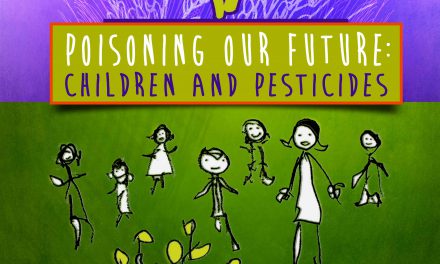Food Standards Australia New Zealand’s (FSANZ) have just released their Report – Perfluorinated Chemicals in Food. The Report on Perfluorooctane Sulfonate (PFOS), Perfluorooctanoic Acid (PFOA), and Perfluorohexane sulfonate (PFHxS) provides new levels for drinking water and tolerable daily intakes (TDI). These levels will replace the very high interim levels set in the ’invitation only’ workshop held last year.
The figures released today will form the basis of discussions at the second ‘invitation only’ workshop to be held in Melbourne by the Victorian EPA 4-5 April 2017. Our requests for NGOs and/or members of civil society to be allowed to attend were refused.
The new FSANZ report repeats the Australian government’s statement that “there is no consistent evidence that exposure to PFAS causes adverse health effects in humans.” This is despite the wealth of evidence to the contrary including the findings of the UN POPs Review committee, the US EPA, Germany and many researchers.
In reviewing the figures it appears odd that for PFOS, FSANZ have adopted the same levels as the US EPA for both the PFOS tolerable daily intake (TDI 0.02ug/kg/bwday) and drinking water quality guidelines (0.07ug/L). Both are a substantial reduction on the interim TDI and drinking water guidelines.
But for PFOA, which has far more information on health impacts, FSANZ have set the TDI (0.16ug /kg bw/day) which is 8 times the new Australian PFOS level and at around 8 times the US EPA level. This is incomprehensible.
In September 2016, the UN POPs Review committee (of which Australia is a member) unanimously agreed “adverse health effects such as elevated cholesterol levels, altered reproductive /developmental effects, endocrine disruption, impaired neurodevelopment, as well as increased risk of cancer associated with PFOA exposure in humans …and that scientific data have demonstrated PFOA-mediated immunotoxicity, primarily suppression of antibody response, in human.”
Importantly, the US guidelines are for PFOS and PFOA combined. i.e., 0.07ug/L, demonstrating that the new Australian levels are substantially higher than those set by the USEPA, and that the TDI and drinking water quality values for PFOA remain very much higher than those guidelines set by the US EPA, Canada, New Jersey etc
It is positive though to see that for PFHxS, even though the information available is much less comprehensive than for the other two, they recommend using the PFOS TDI.
The aim of the PFAS Summit (i.e., PFOS, PFOA, PFHxS, PFBS etc) is to develop a national management plan for PFAS. However, NGOs like ourselves and affected residence were not allowed to attend, other than for the three keynote speeches, which were delivered via the internet, or if you wished to fly to Melbourne for just three hours, you could attend in person for the morning’s session.
Ironically, the opening address acknowledged the success of Australia’s previous National Management Plans for other POPs chemicals (PCB, HCB, organochlorine pesticides), which were developed with full and effective participation of all stakeholders, including NGOs like ourselves, unions and local government.
The Summit’s first Keynote presentation from the US EPA was of interest, particularly for those who knew little about that PFAS issue, which was surprising as this was supposed to be a summit for experts and regulators. The presentation from the European regulator provided useful information, particularly about the growing problem of short chain PFAS.
The last presentation was given by a representative from the New Zealand branch of the international consulting firm, AURECON. Aurecon Australia Pty Ltd have major consultancy contracts with the Australian Department of Defence, responsible for PFAS contamination of many sites including Williamtown in NSW, Oakey in Queensland and other defence sites in NT and WA. During the 10-year period the contracts with 5 companies including Aurecon, are collectively worth more than AUD 9 billion (See http://www.aurecongroup.com/en/about/latest-news/2014/jul/department-of-defence-signing.aspx).
The potential conflict-of-interest was not acknowledged by the presenter or by the organisers of the summit. The Aurecon industry representative openly criticised the EU position and regulations and, his presentation included an inaccurate statement about the status of PFOA on the Stockholm Convention. PFOA is not yet listed on the Convention as it is still under assessment and whether there will be any exemptions is still under consideration. There were no presentations from civil society to counter this industry viewpoint.
NTN did all we could to ensure a more equitable representation at the summit but we were repeatedly told no NGO or member of an affected community would be allowed to participate in the following day and a half when the actual management plan for PFAS will be developed. As many of you know, NTN and our sister organisation IPEN, have participated in the UN and OECD working groups for PFOS and PFOA for over a decade.
We can only stress how concerned we are about the unrepresentative participation of yet another ‘closed shop’ meeting to consider Australia’s response to the PFAS.
Australia remains out of step with international standards
A reminder that while Australian authorities continue to claim that ““there is no consistent evidence that exposure to PFAS causes adverse health effects in humans”, in May 2016, after many years of assessment, the USEPA concluded:
“For PFOS, oral animal studies of short-term and subchronic duration are available in multiple species including monkeys, rats and mice. These studies report developmental effects (decreased body weight, survival, and increased serum glucose levels and insulin resistance in adult offspring), reproductive (mating behavior), liver toxicity (liver weight co-occurring with decreased cholesterol, hepatic steatosis), developmental neurotoxicity (altered spatial learning and memory), immune effects, and cancer (thyroid and liver). Overall, the toxicity studies available for PFOS demonstrate that the developing fetus is particularly sensitive to PFOS induced toxicity.
Human epidemiology data report associations between PFOS exposure and high cholesterol, thyroid disease, immune suppression, and some reproductive and developmental parameters, including reduced fertility and fecundity. Although some human studies suggest an association with bladder, colon, and prostate cancer, the literature is inconsistent and some studies are confounded by failure to control for risk factors such as smoking.”[i]
“For PFOA, oral animal studies of short-term, subchronic, and chronic duration are available in multiple species including monkeys, rats and mice. These studies report developmental effects (survival, body weight changes, reduced ossification, delays in eye opening, altered puberty, and retarded mammary gland development), liver toxicity (hypertrophy, necrosis, and effects on the metabolism and deposition of dietary lipids), kidney toxicity (weight), immune effects, and cancer (liver, testicular, and pancreatic). Overall, the toxicity studies available for PFOA demonstrate that the developing fetus is particularly sensitive to PFOA-induced toxicity.
Human epidemiology data report associations between PFOA exposure and high cholesterol, increased liver enzymes, decreased vaccination response, thyroid disorders, pregnancy-induced hypertension and preeclampsia, and cancer (testicular and kidney).”[ii]
Also in May 2016, after carefully examining the epidemiological literature, the German Human Biomonitoring Commission (HBM Commission) came to similar conclusions rating the detrimental effects in the following areas as well proven, relevant, and significantly associated with exposure to PFOA and/or PFOS:
- Fertility and pregnancy such as increased time to wanted pregnancy, destosis and gestational diabetes, reduced weight of newborns at birth
- Lipid metabolism
- Immunity after vaccination, immunological development
- Hormonal development, age at puberty / menarche
- Thyroid metabolism
- Onset of menopause. [iii]
[i] United States Environmental Protection Agency Office of Water, May 2016 Drinking Water Health Advisory for Perfluorooctane Sulfonate (PFOS)
[ii] United States Environmental Protection Agency Office of Water, May 2016 Drinking Water Health Advisory for Perfluorooctanoic Acid (PFOA)
[iii] https://www.umweltbundesamt.de/en/topics/health/commissions-working-groups/human-biomonitoring-commission/reference-hbm-values.





